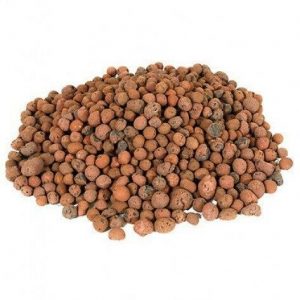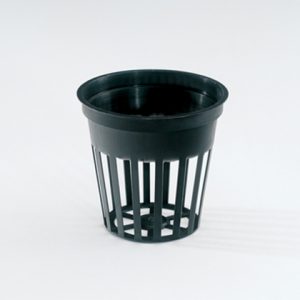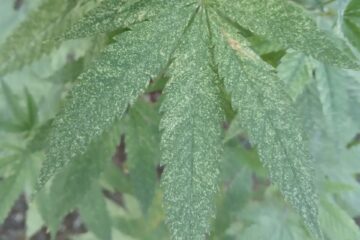Hydroponics, the term given to the cultivation of plants through fertigation in an inert growing medium. Hydroponics relies on the nutrient solution to provide all the food plants need to grow and bear fruit. There are countless different methods of hydroponics and at times it’s hard to keep up with all of them. The theory stays the same. Put nutrients in the water and feed to plants in an inert medium. This, in its simplest form, is basic hydroponics.
Within the hydroponic basic theory, we’ll look at a few mediums for basic hydroponic systems. I’ll touch on some of the equipment you may need and the nutrients available. To keep things simple, we’ll keep the different methods of hydroponics like DWC and NFT out of the post for now.
Basic Hydroponics Growing Mediums
There are various kinds of growing mediums available, depending on the system you choose. They include either one or a combo of the following items. Expanded Clay – 9-16mm pellets, Grodan® AO25/40 Rock Wool, Coco Peat, Perlite, Vermiculite or even air. The common factor linking them is that all of them are inert. To explain, they provide no nutrients to the plants. If possible, they are also pH neutral, which is critical for basic hydroponics.

Traditional pots or containers, drip fed or hand watered is usual for coco peat. The fine coco peat will fall through the gaps of the hydroponic pots and contaminate systems. A great rule to stick to is not to use organic materials in any recirculation systems for basic hydroponics. The material will rot and affect water quality, spreading disease.
Basic Hydroponics Pots
Depending on what you’re growing, you would most likely be using a Net Pot. Also called a hydroponic basket, it holds a small amount of medium. They all have many slits and gaps. This allows roots to easily grow out and into any pipes, trays or buckets. There are generally 3 sizes ranging from 50mm to 125mm, each made for different plants or cultivation practices.

In our experience, a 50mm net pot works for just about any plant and basic hydroponic application. It also assists in saving on growing mediums using the smallest amount. Best to research the plants you intend to grow. You’ll get an idea of how they grow for a basic hydroponics setup and make the right choices. If they have large root systems a bigger net pot could be best.
Basic Hydroponic Nutrients
With plants growing in an inert medium, they are relying on you to provide them with food. The general idea with hydroponic fertilisers is that you get what you pay for. Plenty of premium nutrient brands will invest heavily in sourcing the best quality ingredients. While the more affordable brands could possibly be focussing on keeping costs down. Remember, the basics of hydroponics include giving the right nutrients to plants. Nutrients like Hydroflow Hydroponic Nutrients, EHG Tripak, Athena or Green House Feeding Mineral Starter Kit are all suitable hydroponic nutrients.

Hydropnic nutrients are available in two main forms. Dry powders or granules, and liquids. Dry granules and powders are either sold as simple compounds like Calcium Nitrate and Monopotassium Phosphate. Or blended like Hydroflow or the Athena Pro Line. They can be used as is, adding dry powders to tanks or buckets. Powders are less convenient as you’ll wait for them to dissolve one at a time. Hydroponic powder nutrients can be pre-dissolved into a stock solution to overcome this.
Liquid nutrients are simply the dry granules expertly mixed into a solution by the manufacturer. The pros are that it’s pretty easy to use and no waiting time to dissolve powders. The downside is that you’re paying for water weight and the convenience of pre dissolved nutrients. Often worth it in basic hydroponics setups.
The Nutrient Solution
Along with nutrients, the pH of a hydroponic nutrient solution is pretty important. This ensures strong healthy growth and no deficiencies. If your solution is not within the correct pH range, those nutrients won’t be available to your plants. Plants will be unhealthy, struggle to grow and become easy targets for pests and disease; making basic hydroponics ineffective.
Using a pH meter like the HM pH80 Meter, Plant!t pH Meter or Bluelab pH Pen, Happy Harvest pH Up and Happy Harvest pH Down, the solution needs to be corrected to 5.5-6.5. It’s also important to keep your pH meter accurate. Our guide on How to Calibrate A pH Meter can assist you with that.
Basic Hydroponics – Conclusion
These basic principles of hydroponics are all the same. It’s only the method or cultivation style that will differ. Each form of hydroponic applications will use the above mentioned products in their way. Understanding the basics of hydroponics will help you set up your system effectively.
Both premium and budget nutrients all pretty much do the same thing. They provide plants with food. Like brands of our own food can differ in quality, so do basic hydroponic fertilisers. We tend to pick the best quality food that we can afford at our desired level of convenience. Do the same with your nutrients for basic hydroponics. Choose a nutrient line that’s easy for you to work with and within your budget.




2 Comments
Hans · July 2, 2025 at 4:42 pm
Can I use bloom to stimulate my orchids to bloom .I use pine bark and perlite as a growing medium
admin · July 22, 2025 at 1:10 pm
Hi Hans, a bloom nutrient would be used during the flowering process but wouldn’t necessarily initiate flowering unfortunately